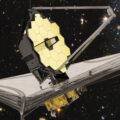MJ BANIAS·JUNE 29, 2023
In a groundbreaking discovery, researchers from the North American Nanohertz Observatory for Gravitational Waves (NANOGrav) have detected a persistent gravitational wave background (GWB). The monumental finding, reported yesterday by the Washington Post, could potentially revolutionize our understanding of the universe and its origins.
Gravitational waves, first predicted by Albert Einstein in his theory of general relativity, are ripples in the fabric of spacetime caused by the acceleration of massive objects. The detection of these waves has been a significant focus of astrophysics since the first direct observation by the Laser Interferometer Gravitational-Wave Observatory (LIGO) in 2015. However, the GWB detected by NANOGrav is a different beast altogether.
So let’s dive into the top five ways this discovery revolutionizes our understanding of the universe.
In a groundbreaking discovery, researchers from the North American Nanohertz Observatory for Gravitational Waves (NANOGrav) have detected a persistent gravitational wave background (GWB). The monumental finding, reported yesterday by the Washington Post, could potentially revolutionize our understanding of the universe and its origins.
Gravitational waves, first predicted by Albert Einstein in his theory of general relativity, are ripples in the fabric of spacetime caused by the acceleration of massive objects. The detection of these waves has been a significant focus of astrophysics since the first direct observation by the Laser Interferometer Gravitational-Wave Observatory (LIGO) in 2015. However, the GWB detected by NANOGrav is a different beast altogether.
So let’s dive into the top five ways this discovery revolutionizes our understanding of the universe.
NEW ERA IN GRAVITATIONAL WAVE ASTRONOMY
The detection of the gravitational wave background (GWB) by the North American Nanohertz Observatory for Gravitational Waves (NANOGrav) marks a significant milestone in gravitational wave astronomy. Unlike the individual gravitational wave events detected by LIGO, the GWB is a persistent, “humming” signal resulting from countless unresolved sources. Dr. Sarah Burke-Spolaor, a member of the NANOGrav team, likens it to “a symphony of the universe.” This discovery ushers in a new era of gravitational wave astronomy, where we can listen to the cosmic symphony and uncover the secrets of the universe.
UNVEILING THE DANCE OF SUPERMASSIVE BLACK HOLES
The GWB is thought to be largely composed of gravitational waves from pairs of supermassive black holes spiraling toward each other. These cosmic behemoths, each millions or billions of times the mass of our sun, have long been a subject of fascination and study. The detection of the GWB provides a unique opportunity to study these black hole pairs, offering insights into their behavior, their distribution in the universe, and the processes involved in their formation and evolution.
PROBING THE EARLY UNIVERSE
The GWB could potentially provide a window into the early universe, including the era of cosmic inflation, a brief period just after the Big Bang when the universe expanded at an astonishing rate. As Dr. Chiara Mingarelli, a scientist at the Flatiron Institute’s Center for Computational Astrophysics, explains, “The gravitational wave background could be a treasure trove of information about the early universe.” This could revolutionize our understanding of the Big Bang and the subsequent evolution of the universe.
TESTING THE LIMITS OF GENERAL RELATIVITY
Einstein’s theory of general relativity, which predicts the existence of gravitational waves, has passed every test so far. However, the detection of the GWB could provide a new testing ground for this theory. Dr. Mingarelli suggests that the GWB could help us “test the limits of Einstein’s theory of general relativity.” This could potentially lead to new insights into the nature of gravity and the fundamental laws of physics.
UNRAVELING THE MYSTERIES OF DARK MATTER AND DARK ENERGY
Dark matter and dark energy are two of the biggest mysteries in modern physics. Together, they make up about 95% of the universe, but we know very little about them. The GWB could provide new clues about these elusive phenomena. As Dr. Mingarelli points out, the GWB could help us understand the nature of dark matter and dark energy. This could have profound implications for our understanding of the universe and its ultimate fate.

See Also
NASA ANOMALY REVIEW BOARD INVESTIGATES “INCIDENT” WITH THE JAMES WEBB SPACE TELESCOPE
The detection of the GWB by NANOGrav is a game-changer in the field of astrophysics. Still, the researchers caution that the detection of the GWB needs to be confirmed by independent observations, and there is much work to be done to understand its implications more fully.
Regardless, this discovery underscores the importance of patience, collaboration, and meticulous data collection in scientific research. More importantly, it highlights the power of gravitational waves as a tool for understanding the universe, from the dance of supermassive black holes to the earliest moments of the Big Bang. As we continue to listen to the “cosmic symphony,” who knows what other secrets we might uncover; perhaps, this will help us develop a better understanding of our place in the mysterious cosmos.
MJ Banias is a journalist and podcaster who covers security, science, and tech. Follow him on Twitter @mjbanias.

No comments:
Post a Comment